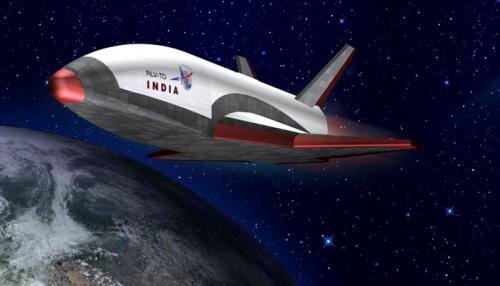- News>
- Space
ISRO to test next reusable launch vehicle after studying data of May 23 flight

The Indian Space Research Organisation (ISRO) has successfully launched it`s first ever `Made-in-India` space shuttle RLV-Technology Demonstrator on May 23, 2016.
Chennai: The Indian Space Research Organisation (ISRO) has successfully launched it's first ever 'Made-in-India' space shuttle RLV-Technology Demonstrator on May 23, 2016.
After the launch, the Indian space agency will now test the next reusable launch vehicle test after studying May 23 flight data.
A senior official in the Indian space agency says that India will test the next set of space technologies relating to the reusable launch vehicle (RLV) after studying the data collected from the May 23 flight of RLV-Technology Demonstrator.
"We will have to study the data generated from the May 23 flight. Then we have to decide on the next set of technologies to be tested on the next flight. We have not finalised the time frame for the next RLV flight," K Sivan, director, Vikram Sarabhai Space Centre (VSSC) said on Wednesday.
The VSSC which is located in Thiruvananthapuram builds the Indian rockets that put into orbit earth observation and communication satellites.
K Sivan added that the next RLV will be made to land in a runway like stretch to be built at India's rocket port at Sriharikota around 80 km from here,
He further states that they have identified the land and construction activities are yet to begin.
On May 23 ISRO successfully took the first step in developing a RLV by successfully testing an aircraft like winged structure.
Called RLV-TD HEX 01 mission, the winged structure which sat atop a rocket was released into space.
The winged structure came back and landed in the Bay of Bengal as originally planned.
"As per data the RLV-TD landed softly in Bay of Bengal. As per our calculations it would have disintegrated at the speed at which it touched the sea," Sivan said.
He said the Indian Space Research Organisation (ISRO) plans to put into orbit around 60 satellites over the next five years and the bulk of them will be earth observation satellites.
He said the first developmental flight of India's heaviest rocket geosynchronous satellite launch vehicle-Mark III (GSLV-MkIII) will be in December 2016 carrying the GSAT-19 satellite.
Sivan said the second developmental flight of GSLV-MkIII is slated for December 2017.
"The time gap is mainly to study the data generated from the first flight and also to develop the necessary hardware. Once the two developmental flights are successful then the rocket will be termed fit for commercial flights," Sivan said.
The GSLV-MkIII will be powered by an India designed cryogenic engine.
"Soon the cryogenic stage -- engine, fuel and other systems -- will be tested. Then the stage will be tested in vacuum conditions and there will also be a high altitude test," Sivan said.
On successful test results of the cryogenic engine the GSLV-MkIII will be sent up.
(With IANS inputs)
